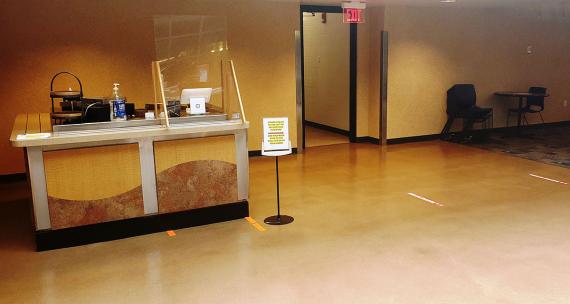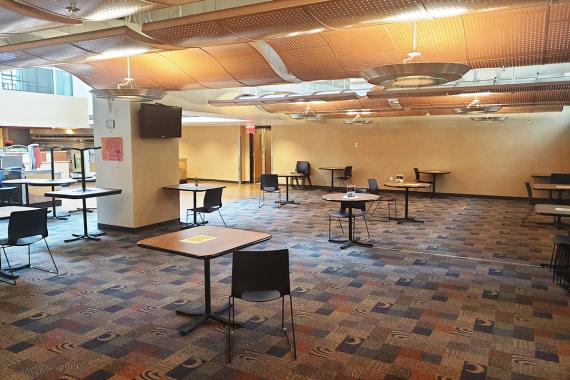Morgan figuring it out on the ground as COVID-19 phases evolve

By Alison Kohler
OMAHA, Nebraska — GSA used its own form of “triage” to respond to the influx of reported COVID-19 incidents at buildings and leased locations GSA manages.
“The first couple of (reported suspected cases) were kind of panicky,” said Building Manager Terry Morgan at GSA’s Edward Zorinsky Federal Building.
Regional leaders and employees from property management, industrial hygiene, acquisition and other divisions joined conference calls almost immediately to talk through what steps to take.
“From then on, we used email conversations and decided if we were going to do (additional routine or detailed cleaning and disinfection),” Morgan said. “The team came together really well as far as guidance, the triage, and what to do to proceed. It made it easy on building managers.”
Morgan said when he learned of a suspected case, he would ask when the person was last in the space, what entrance they used, what path they traveled in the building, and where they went within their work area. Morgan would work with the contractor to clean these areas according to CDC guidelines.
Behavior changes prove harder than cleaning
It was harder for Morgan to adjust to physical distancing and face coverings than it was to adjust to higher cleaning and disinfection standards.
“I’m a hand shaker, so that was one of the harder things,” Morgan said.

“The weirdest thing is keeping that 6-foot distance from people you have a relationship with. I did notice wearing a mask, you have to speak louder to compensate for being muffled,” he said.
Morgan said he knows how well GSA’s contractor disinfects the building, “so I’m very confident our surfaces are clean and disinfected.”
He said he thinks some of the hardest work is yet to come as tenants return to the building, and that open communication with tenant agencies will be important.
“Even though we’re confident our building is disinfected, we have to ensure our tenants feel that same confidence,” he said. “They have to have faith in GSA and building management staff and contractors that we take this seriously. If someone would come back and feel sick or learn of an exposure, we need to know right away, so we can take care of it and make it a safe place to work.”
Timely changes throughout the building
To make the building safer for occupants, Morgan said they have made many changes, including:
- Additional signage and markings.
- Installing sneeze guards.
- Adjusting the seating in the cafeteria.
- Additional hand sanitizing stations.
GSA is working with the building’s designated official and other partners to make sure the building is geared up through phase changes.
“We always had an agency that said they had to stay open. The fact we were able to keep going and keep other agencies going so they could do their mission, that’s why we’re here,” Morgan said. “When this is over, we need to pat ourselves on the back.”

 U.S. General Services Administration
U.S. General Services Administration